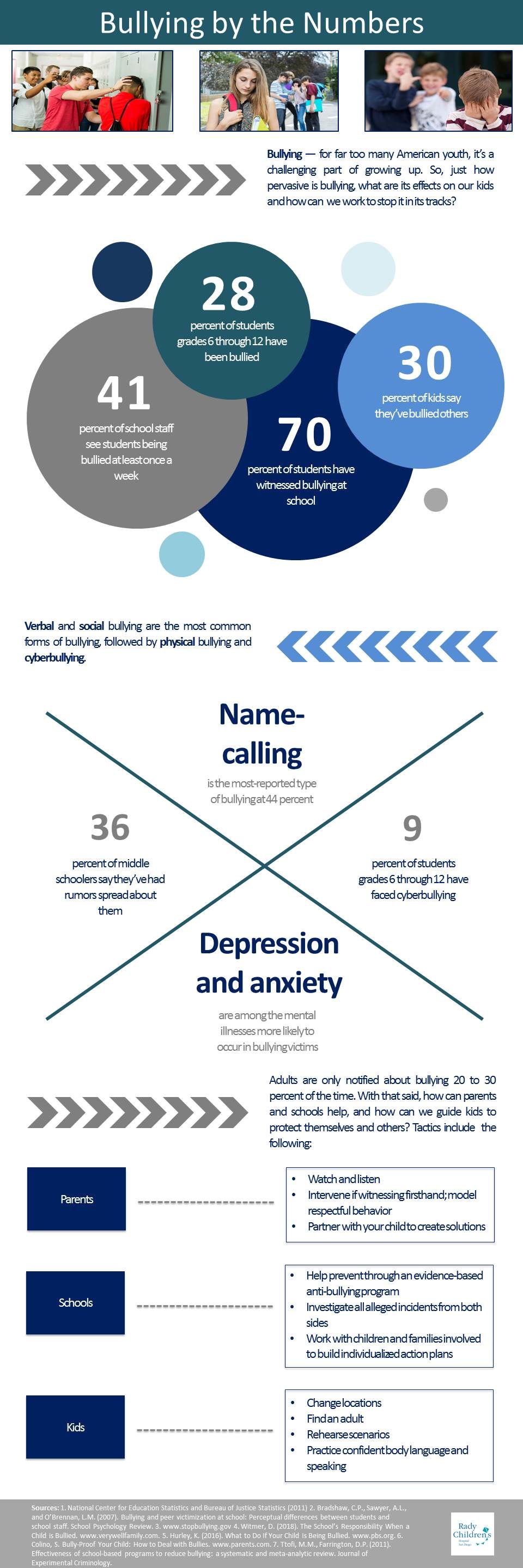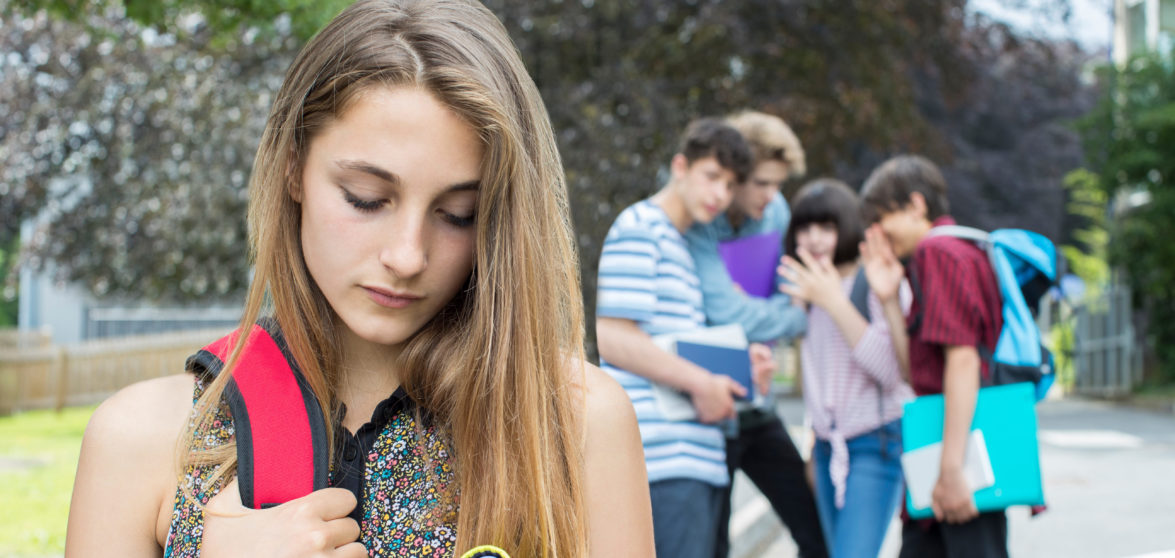In recent years, bullying has become increasingly recognized as a widespread and common issue for young people. And it’s not just happening during those classically challenging middle school years. About 20 percent of high school students are bullied[1], while 90 percent of elementary school children say they’ve been bullied at least once by their peers[2]. While bullying can happen to any child, “often, kids are bullied because of differences in race or religion, or because of disabilities or special needs. Lesbian, gay, bisexual, transgender, queer or intersex youth are also at a higher risk for being targeted,” says Brent Crandal, Ph.D., child and family psychologist at The Chadwick Center for Children & Families at Rady Children’s Hospital-San Diego.
After the initial sting of bullying has worn off, its effects can be lasting and profound. “Bullying can be a source of intense strain, worry, sadness and isolation,” Crandal explains. “Sometimes, bullying carries on for weeks, months and even years, and can often be traumatizing.” For example, bullying has been linked to serious mental health implications ranging from agoraphobia, anxiety and panic disorders, depression, and antisocial personality disorder to suicidal ideation, plans and attempts[3].
Many kids are loath to disclose if they’re being bullied to adults. However, “parents, caregivers or other supportive adults should watch for signs like unexplained injuries, lost or destroyed belongings, frequent illness or faking illness to avoid school, declining grades, or changes in social life,” states Crandal. It’s important to note that while these behaviors don’t necessarily mean your child is being bullied, they may indicate other issues that also need a listening ear, support and potentially additional help. If anything piques your parental radar, Crandal says “adults can [initiate] discussions about how a young person feels at school and with his or her peers and offer an open, understanding attitude. Kids might not want to talk … but these steps can be helpful to [starting] the conversation.”
For more on how bullying has worked its way into our world, as well as targeted solutions for parents, schools and kids alike, check out the infographic below.

[1] Centers for Disease Control and Prevention (2013). www.stopbullying.gov.
[2] Mozes, A. and HealthDay Reporter. (2018). 90% of Elementary School Kids Are Bullied: Survey. www.abcnews.com.
[3] Perugini, C. (2013). Research Brief: Childhood Bullying Linked to Adult Psychiatric Disorders. www.stopbullying.gov.
